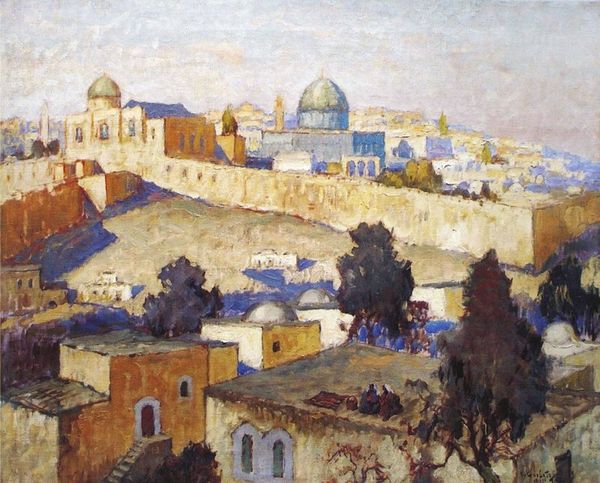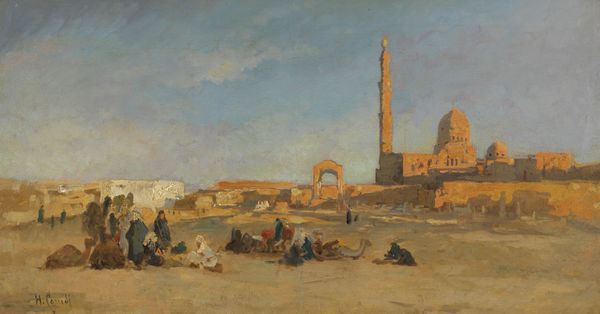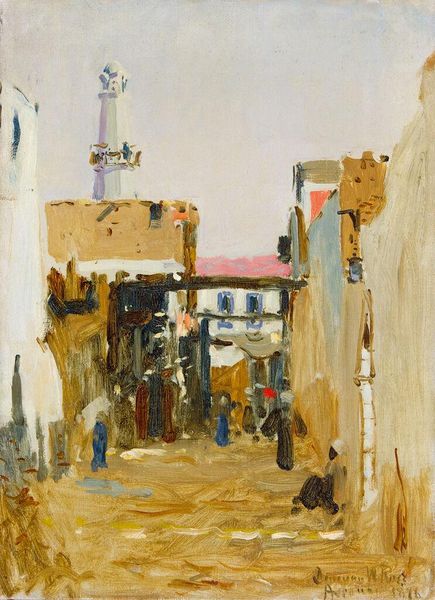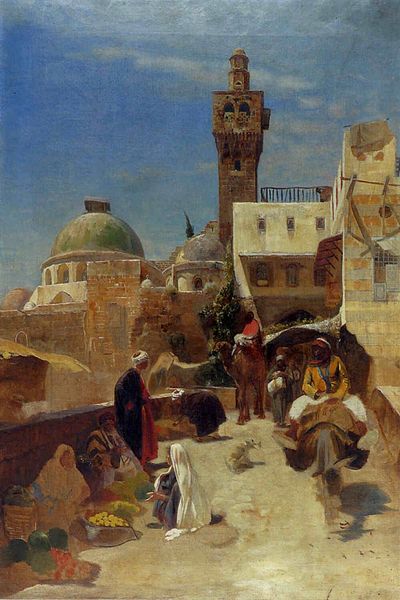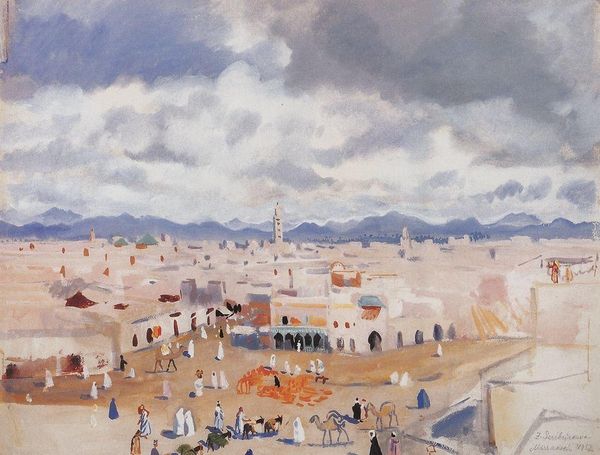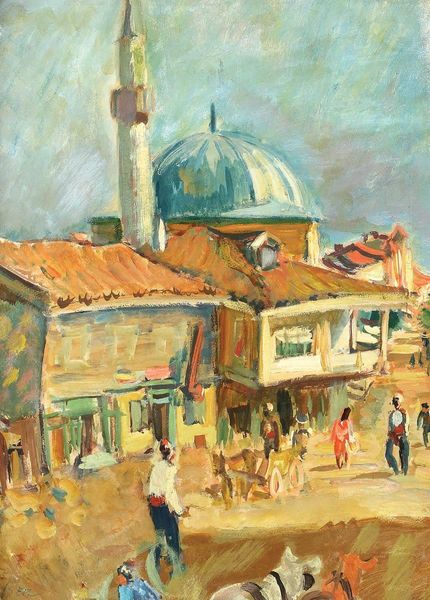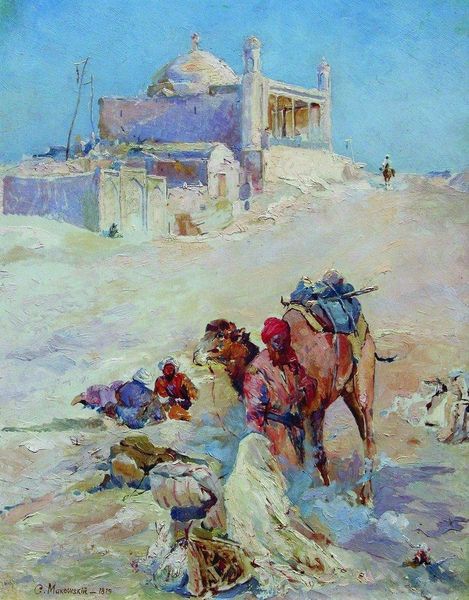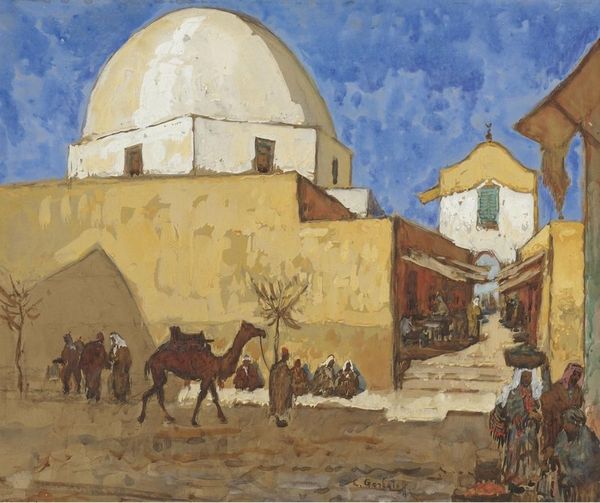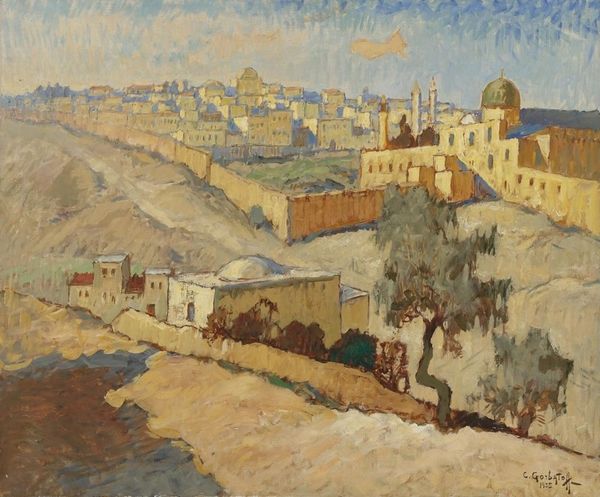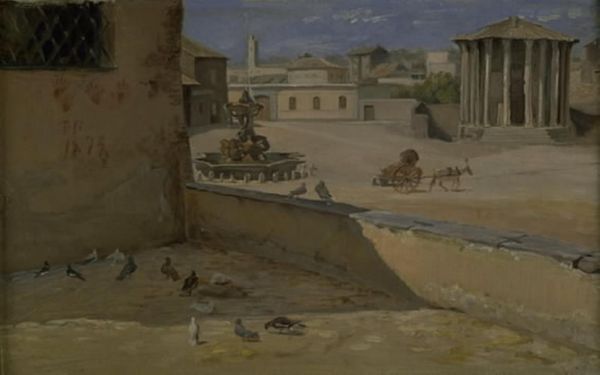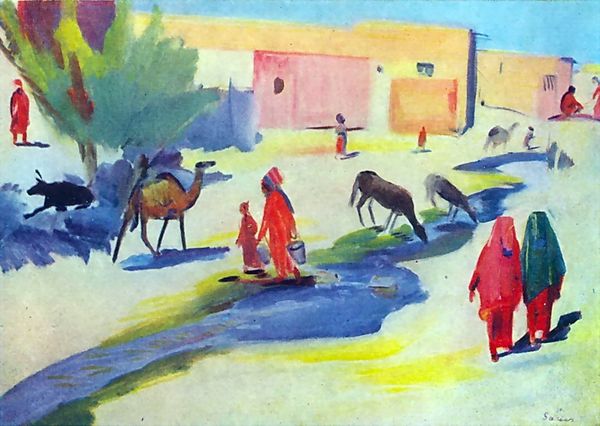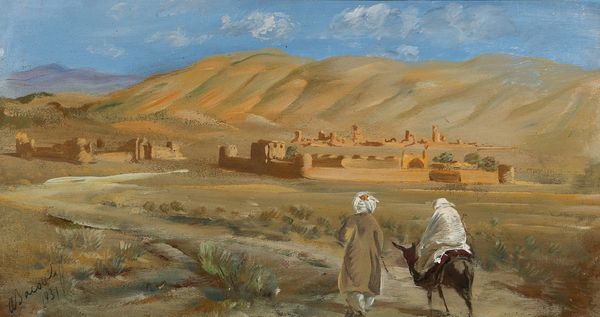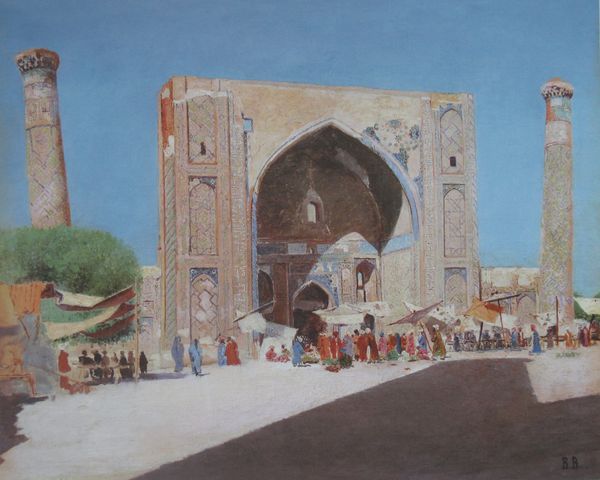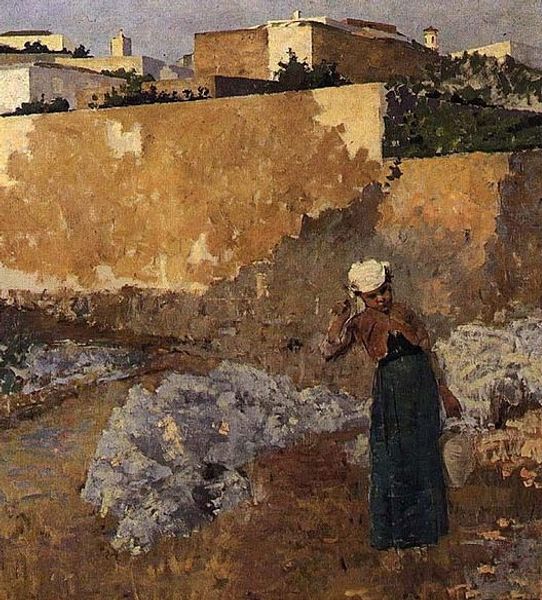
painting, oil-paint
#
tree
#
fauvism
#
abstract painting
#
painting
#
oil-paint
#
landscape
#
house
#
impressionist landscape
#
handmade artwork painting
#
oil painting
#
expressionism
#
orientalism
#
abstraction
#
cityscape
#
painting art
#
street
#
building
Dimensions: 67.3 x 99.5 cm
Copyright: Public domain
Editor: This is Kandinsky’s "Arab Town," created around 1905 using oil paint. The colors are so vibrant and the forms are simplified, almost abstracted. I'm drawn to the architectural shapes. What strikes you most about this work? Curator: For me, the painting resonates with echoes of cultural memory. Consider the interplay of light and shadow. What feelings does that contrast evoke in you? It speaks volumes, doesn’t it? The simplification of forms might appear naive, but I see them as distilling the essence of a place and a culture down to its core symbolic elements. Look at the dome and the tower. They are instantly recognizable symbols. Editor: Yes, I see what you mean. The dome and tower are so striking against the earthy tones, even with the slightly muted blues and greens in the landscaping. So, beyond the architectural symbols, what else carries symbolic weight? Curator: Notice how the figures are rendered – almost like glyphs. They represent the inhabitants, their presence marked more by color and shape than by individual detail. They integrate with the architecture to express cultural continuity and daily life, but what do they trigger in *your* understanding of humanity and place? Editor: It's like they’re part of the very fabric of the town itself. The colors and simplified forms really stick in your mind. They make a lasting impression. Curator: Exactly! These aren’t mere decorations; they contribute to a deeper, perhaps unconscious, understanding of community, history, and belonging. So it brings us back to the question, "Why does this view and the artist’s expression of it continue to speak across time?" Editor: I guess it speaks to our shared human experience of place. Thanks, that gives me a lot to think about.
Comments
No comments
Be the first to comment and join the conversation on the ultimate creative platform.
